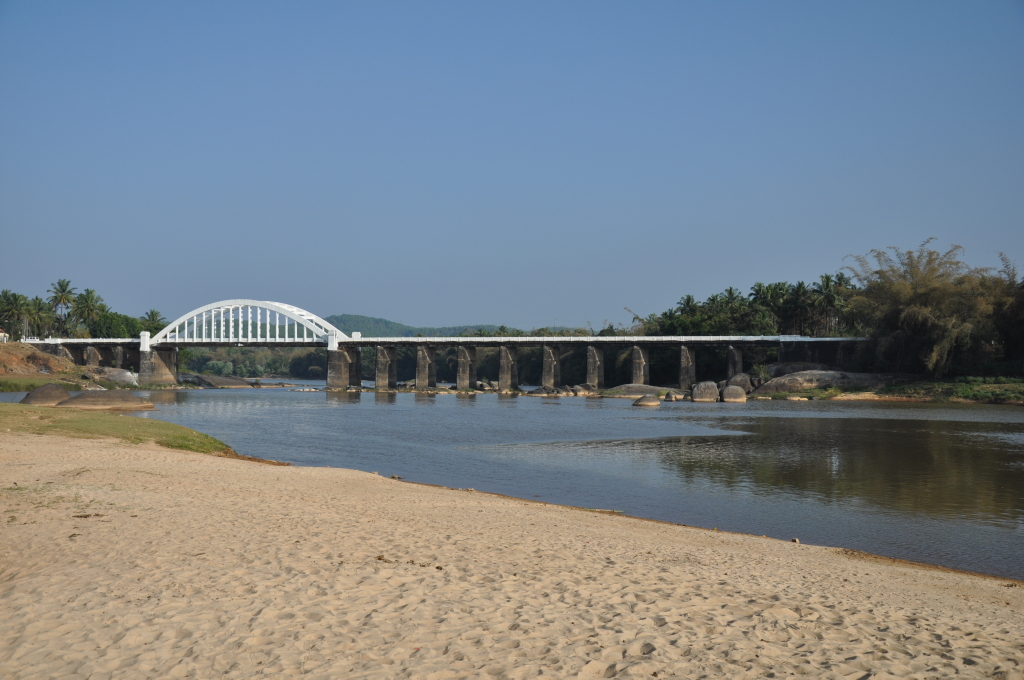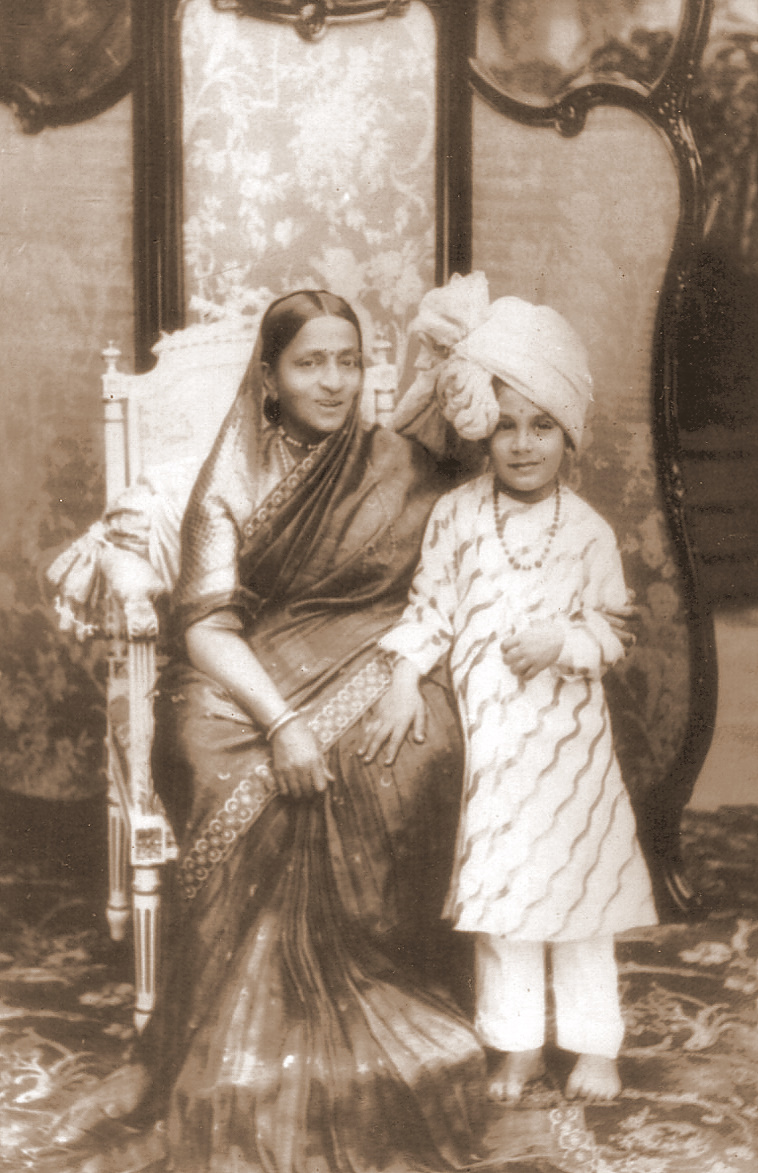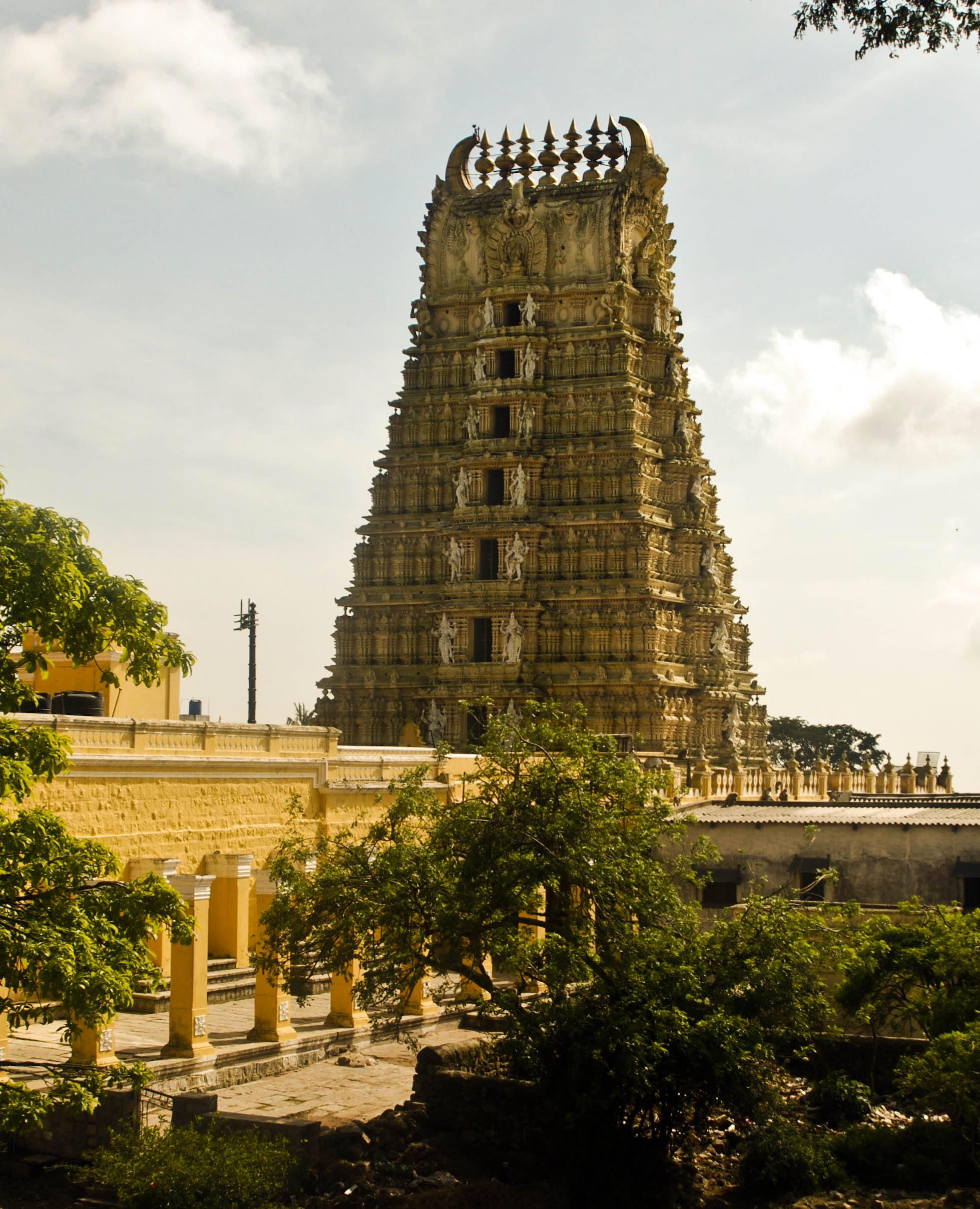|
Tunga Bridge
Tunga Bridge in Thirthahalli, Karnataka, India, is one of the oldest bridges across the Tunga River. This bridge is over 75 years old and it was designed by, and built under supervision of, Bharat Ratna Sir M. Visvesvaraya. The bridge connects the area Kuruvalli with Thirthahalli. Tunga Bridge is also called Jayachamarajendra Bridge. The Tunga Bridge draws many visitors, especially on weekends to see the uniqueness of the bridge. Bridge structure This bridge has an arc-like structure at the top which is supported by consecutive pillars on either side of the bridge. There are beam-like structures on the top, connecting the two arcs, appearing as a roof. This unique bridge resembles the Sydney Harbour Bridge but with a slight difference. History The bridge was completed in 1943, and inaugurated by H. H. Jayachamarajendra Wadiyar, then the Maharaja of Mysore, and also named after him. See also * * * References {{coord, 13.6847, 75.2479, type:landmark_region:IN, display=t ... [...More Info...] [...Related Items...] OR: [Wikipedia] [Google] [Baidu] |
Tunga Bridge Side View
Tunga may refer to: Places * Tunga, Leyte, a municipality in the Philippines * Tunga River, a river in India * The Gaelic name for the village of Tong, Lewis, in the Western Isles of Scotland * The Gaelic name for the village of Tongue, Highland, in the northwest of Scotland * Tunga Spur, a rock formation in Antarctica * Tunka Suka or ''Tunga Suca'', a mountain in Peru * Tálknafjörður, a town formerly called Tunga, in Iceland People * Alp Er Tunga, a mythical hero in Turkish literature * Michy Batshuayi Tunga, footballer * Tunga (artist) (1952–2016), Brazilian sculptor and performance artist Other uses * Tunga (flea), ''Tunga'' (flea), a genus of burrowing fleas * ''Tunga rakau'' or ''tunga haere'', Maori names for huhu beetle larvae * Battle of Tunga, or Battle of Lalsot in India in 1787 {{Disambiguation, geo ... [...More Info...] [...Related Items...] OR: [Wikipedia] [Google] [Baidu] |
Thirthahalli
Thirthahalli is a panchayat town located in the Shimoga district of the state of Karnataka, India. It lies on the bank of the river Tunga and is also the headquarters of the Thirthahalli Taluk of Shimoga district. Geography Thirthahalli is located at . It has an average elevation of 591 metres (1938 feet). The Tirthahalli Town Panchayat has population of 14,528 of which 7,093 are males while 7,435 are females as per report released by Census India 2011. Languages The majority of people speak Kannada. There are also a sizeable number of Tulu speakers in this region. Notable people * Kuvempu - Kannada author and poet, Jnanapeetha and Padma Vibhushan awardee * Shantaveri Gopala Gowda - Socialist Leader and Politician. * U. R. Ananthamurthy- Contemporary writer, Novelist and critic, Jnanapeetha and Padma Bhushan awardee. * Kadidal Manjappa- Politician and former Chief Minister of Karnataka * Justice. M Rama Jois - Advocate and Chief Justice, Former Governor ... [...More Info...] [...Related Items...] OR: [Wikipedia] [Google] [Baidu] |
Karnataka
Karnataka (; ISO: , , also known as Karunāḍu) is a state in the southwestern region of India. It was formed on 1 November 1956, with the passage of the States Reorganisation Act. Originally known as Mysore State , it was renamed ''Karnataka'' in 1973. The state corresponds to the Carnatic region. Its capital and largest city is Bengaluru. Karnataka is bordered by the Lakshadweep Sea to the west, Goa to the northwest, Maharashtra to the north, Telangana to the northeast, Andhra Pradesh to the east, Tamil Nadu to the southeast, and Kerala to the southwest. It is the only southern state to have land borders with all of the other four southern Indian sister states. The state covers an area of , or 5.83 percent of the total geographical area of India. It is the sixth-largest Indian state by area. With 61,130,704 inhabitants at the 2011 census, Karnataka is the eighth-largest state by population, comprising 31 districts. Kannada, one of the classical languages of In ... [...More Info...] [...Related Items...] OR: [Wikipedia] [Google] [Baidu] |
Tunga River
The Tunga River (alternatively spelled Thunga) is a river in Karnataka state, southern India. The river is born in the Western Ghats on a hill known as ''Varaha Parvata'' at a place called '' Gangamoola''. From here, the river flows through two districts in Karnataka - Chikmagalur District and Shimoga District. It is 147 km long and merges with the Bhadra River at Koodli, a small town near Shimoga City, Karnataka. The river is given the compound name Tungabhadra from this point on. The Tungabhadra flows eastwards and merges with the Krishna River in Andhra Pradesh. It has a dam built across it at Gajanur, and a larger dam has been built across the compound Tungabhadra river at Hospet. Religious centres Sringeri, on the banks of the Tunga, has several temples, the most important being the Śhāradā temple and the Vidyāśhankara temple. Hariharapura is another religious centre on the bank of Tunga river in the Chikkamagalurur district. See also * Netravati ri ... [...More Info...] [...Related Items...] OR: [Wikipedia] [Google] [Baidu] |
Bharat Ratna
The Bharat Ratna (; ''Jewel of India'') is the highest civilian award of the Republic of India. Instituted on 2 January 1954, the award is conferred in recognition of "exceptional service/performance of the highest order", without distinction of race, occupation, position, or sex. The award was originally limited to achievements in the arts, literature, science, and public services, but the government expanded the criteria to include "any field of human endeavour" in December 2011. The recommendations for the Bharat Ratna are made by the Prime Minister to the President, with a maximum of three nominees being awarded per year. The recipients receive a ''Sanad'' (certificate) signed by the President and a peepal leaf-shaped medallion. There is no monetary grant associated with the award. Bharat Ratna recipients rank seventh in the Indian order of precedence. The first recipients of the Bharat Ratna were: the last Governor-General of the Dominion of India and the former Chief ... [...More Info...] [...Related Items...] OR: [Wikipedia] [Google] [Baidu] |
Sydney Harbour Bridge
The Sydney Harbour Bridge is a steel through arch bridge in Sydney, spanning Sydney Harbour from the central business district (CBD) to the North Shore. The view of the bridge, the harbour, and the nearby Sydney Opera House is widely regarded as an iconic image of Sydney, and of Australia itself. Nicknamed "The Coathanger" because of its arch-based design, the bridge carries rail, vehicular, bicycle and pedestrian traffic. Under the direction of John Bradfield of the New South Wales Department of Public Works, the bridge was designed and built by British firm Dorman Long of Middlesbrough, and opened in 1932. The bridge's general design, which Bradfield tasked the NSW Department of Public Works with producing, was a rough copy of the Hell Gate Bridge in New York City. This general design document, however, did not form any part of the request for tender, which remained sufficiently broad as to allow cantilever (Bradfield's original preference) and even suspension bridge propos ... [...More Info...] [...Related Items...] OR: [Wikipedia] [Google] [Baidu] |
Jayachamarajendra Wadiyar
Jayachamarajendra Wadiyar (18 July 1919 – 23 September 1974) was the 25th Maharaja of Mysore from 1940 to 1950, who later served as the governor of Mysore and Madras states. Early life Jayachamarajendra Wadiyar was born on 18 July 1919 at Mysore Palace as the only son and the last child of Yuvaraja Kanteerava Narasimharaja Wadiyar and Yuvarani Kempu Cheluvajamanni. He had three elder sisters, ''viz''., Rani Vijaya Devi, Sujayakantha Devi, and Jayachamundi Devi. Jayachamarajendra Wadiyar graduated from Maharaja's College, Mysore, in 1938, earning five awards and gold medals. He was married the same year, on 15 May 1938, to Maharani Satya Prema Kumari at Mysore Palace. He toured Europe during 1939, visiting many associations in London and became acquainted with many artists and scholars. He ascended the throne of the Kingdom of Mysore on 8 September 1940 after the demise of his uncle Maharaja Krishnaraja Wodeyar IV. He married Maharani Tripura Sundari Ammani on 6 May ... [...More Info...] [...Related Items...] OR: [Wikipedia] [Google] [Baidu] |
Maharaja
Mahārāja (; also spelled Maharajah, Maharaj) is a Sanskrit title for a "great ruler", "great Monarch, king" or "high king". A few ruled states informally called empires, including ruler raja Sri Gupta, founder of the ancient Indian Gupta Empire, and Chandragupta Maurya. 'Title inflation' soon led to most being rather mediocre or even petty in real power, which led to compound titles (among other efforts) being used in an attempt to distinguish some among their ranks. The female equivalent, Maharani (or Maharanee, Mahārājñī, Maharajin), denotes either the wife of a Maharaja (or Maharana etc.) or also, in states where it was customary, a Queen regnant, woman ruling without a husband. The widow of a Maharaja is known as a Rajmata, "queen mother". Maharajakumar generally denotes a son of a Maharaja, but more specific titulatures are often used at each court, including Yuvaraja for the heir (the crown prince). The form "Maharaj" (without "-a") indicates a separation of nobl ... [...More Info...] [...Related Items...] OR: [Wikipedia] [Google] [Baidu] |
Mysore
Mysore (), officially Mysuru (), is a city in the southern part of the state of Karnataka, India. Mysore city is geographically located between 12° 18′ 26″ north latitude and 76° 38′ 59″ east longitude. It is located at an altitude of above mean sea level. Mysore is situated at the foothills of Chamundi Hills about towards the southwest of Bangalore and spread across an area of . Mysore City Corporation is responsible for the civic administration of the city, which is also the headquarters of Mysore district and Mysore division. It served as the capital city of the Kingdom of Mysore for nearly six centuries from 1399 until 1956. The Kingdom was ruled by the Wadiyar dynasty, with a brief period of interregnum in the late 18th century when Hyder Ali and Tipu Sultan were in power. The Wadiyars were patrons of art and culture. Tipu Sultan and Hyder Ali also contributed significantly to the cultural and economic growth of the city and the state by planting ... [...More Info...] [...Related Items...] OR: [Wikipedia] [Google] [Baidu] |
Bridges In Karnataka
A bridge is a structure built to span a physical obstacle (such as a body of water, valley, road, or rail) without blocking the way underneath. It is constructed for the purpose of providing passage over the obstacle, which is usually something that is otherwise difficult or impossible to cross. There are many different designs of bridges, each serving a particular purpose and applicable to different situations. Designs of bridges vary depending on factors such as the function of the bridge, the nature of the terrain where the bridge is constructed and anchored, and the material used to make it, and the funds available to build it. The earliest bridges were likely made with fallen trees and stepping stones. The Neolithic people built boardwalk bridges across marshland. The Arkadiko Bridge (dating from the 13th century BC, in the Peloponnese) is one of the oldest arch bridges still in existence and use. Etymology The '' Oxford English Dictionary'' traces the origin of ... [...More Info...] [...Related Items...] OR: [Wikipedia] [Google] [Baidu] |
Transport In Shimoga District
Transport (in British English), or transportation (in American English), is the intentional movement of humans, animals, and goods from one location to another. Modes of transport include air, land (rail and road), water, cable, pipeline, and space. The field can be divided into infrastructure, vehicles, and operations. Transport enables human trade, which is essential for the development of civilizations. Transport infrastructure consists of both fixed installations, including roads, railways, airways, waterways, canals, and pipelines, and terminals such as airports, railway stations, bus stations, warehouses, trucking terminals, refueling depots (including fueling docks and fuel stations), and seaports. Terminals may be used both for interchange of passengers and cargo and for maintenance. Means of transport are any of the different kinds of transport facilities used to carry people or cargo. They may include vehicles, riding animals, and pack animals. Vehicles may incl ... [...More Info...] [...Related Items...] OR: [Wikipedia] [Google] [Baidu] |




